Vast and spacious coastline area in the Northern part of the Paphos. Tombs of the Kings Paphos is an archeological site where you can roam freely for an entrance ticket fee of 2.50 EUR. The site offers plenty of space for all visitors especially if you are interested in landscape architecture photography.
The site is easily reachable by car or bus, for example, n. 615 which starts at the bus station and ends its journey in Coral Bay. The site is open daily from 8.30 am until 7.30 in summer and in winter it closes at 5 pm.
(Note: Images in paragraphs do not always match the number of tomb in the text.)

Historical Insights
According to the Department of Antiquities in Cyprus Tombs of the Kings is a necropolis signed under UNESCO heritage. During the Hellenistic period, people built the burial place, but not for royalties like kings or queens. The name mostly stands for the impressive caved catacombs and chambers where many bodies of the aristocrats like officers including family members of the past era found their forever resting place.
It appears that Christians as well as squatters occupied the place during medieval times. Additionally, a person named Cesnola looted it.
Regular and systematic excavation works on the site, aimed at uncovering its hidden treasures, commenced in 1977.

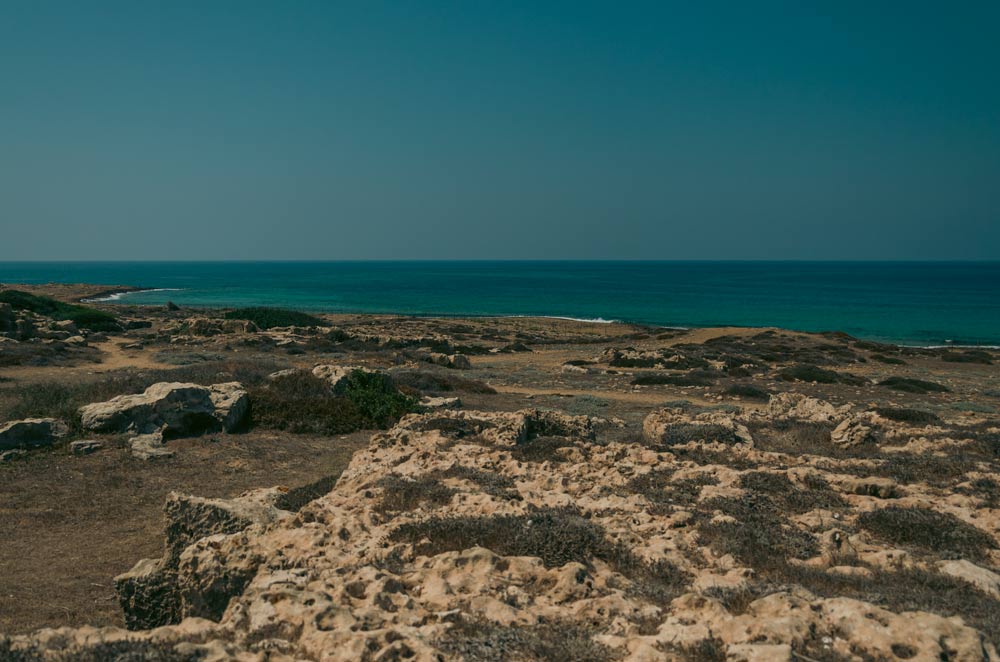
Nine tombs, carved out of the rocks, feature columns or pillars in the Doric style, underground catacombs, and open peristyle atriums. Some walls also have frescoes, albeit not well-preserved.
Tomb 1
This tomb, carved into a rocky outcrop, features burial chambers with loculi and ossuaries on three sides. Its smoothed exterior suggests Hellenistic and Roman decorative elements. A cavity near the southern wall once held a clay pipe for libations. Resembling Petra’s rock-cut tombs, it stands out in The Tombs of the Kings for its monumental facade.
Tomb 2
This tomb stands out for its Roman-era horned altars, carved into the wall to the left of the staircase landing. These altars adorn a burial niche within the chamber. Additionally, the Romans constructed a vault during the Roman period to cover the Hellenistic atrium, thus creating a new enclosed burial chamber. The outline of this vault, surrounding the altars, is visible within the tomb.
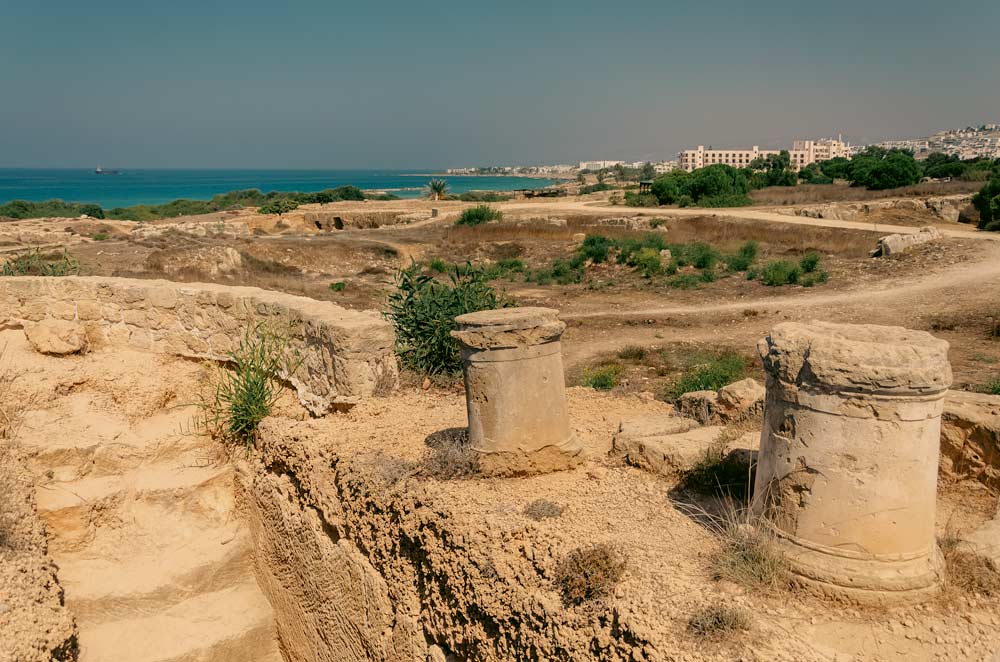
Tomb 3
The most famous and known tomb on the site. You have seen it probably in one of the many images of this place. Probably the most preserved one. It has an atrium surrounded by a Dorian-style portico with simple columns and an entablature featuring triglyphs and metopes. These architectural designs likely stem from the burial structures of the Alexandria necropolis, resembling those in the Mustafa Pasha necropolis. They’re influenced by the residential architecture of the Hellenistic period, seen in cities like Delos, Pergamon, and Priene.
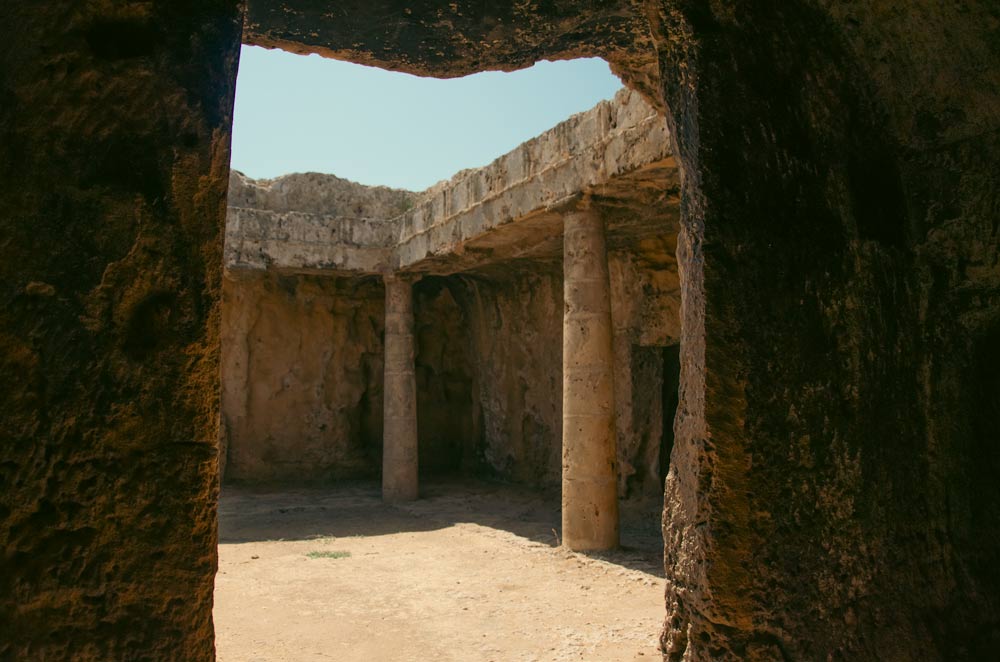
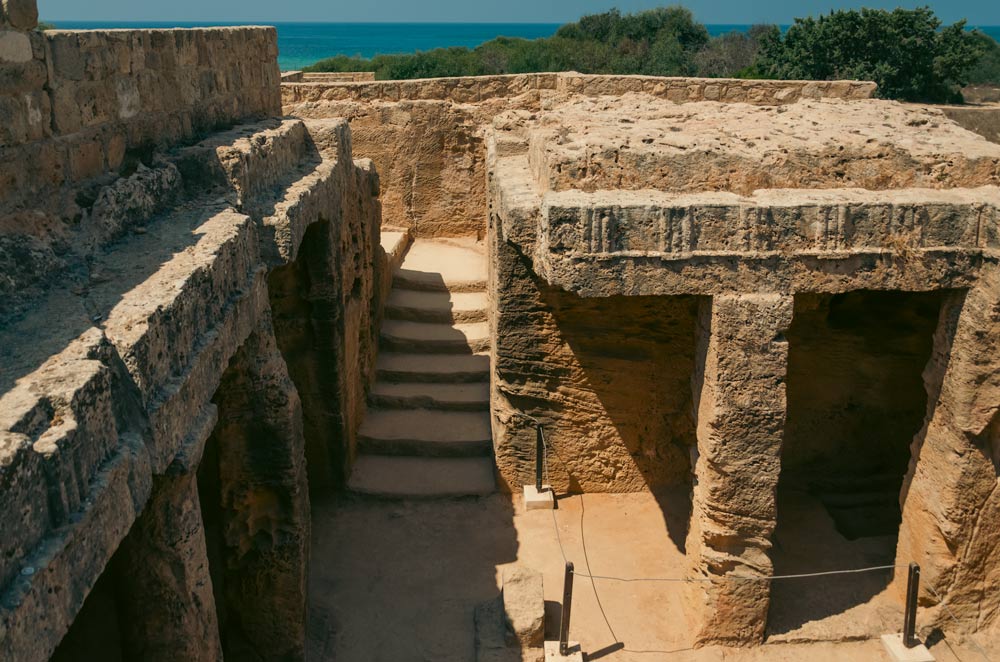
Tomb 4
Right next to Tomb 3, you will find Tomb number 4. You can access it through a stepped dromos. Opposite the dromos is the burial chamber with niches for simple burials. Further west is a large tomb with a dromos and a burial chamber containing ten niches and a child’s tomb. Despite facing rough times and sustaining damage from quarrying, the tomb remained intact. Some gold jewels were found there too.
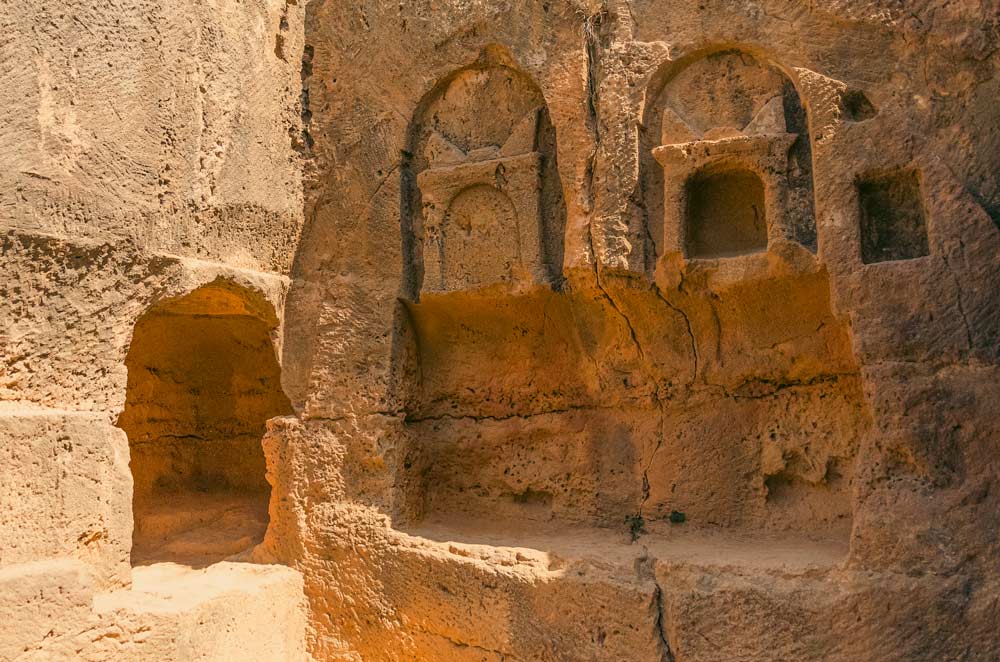
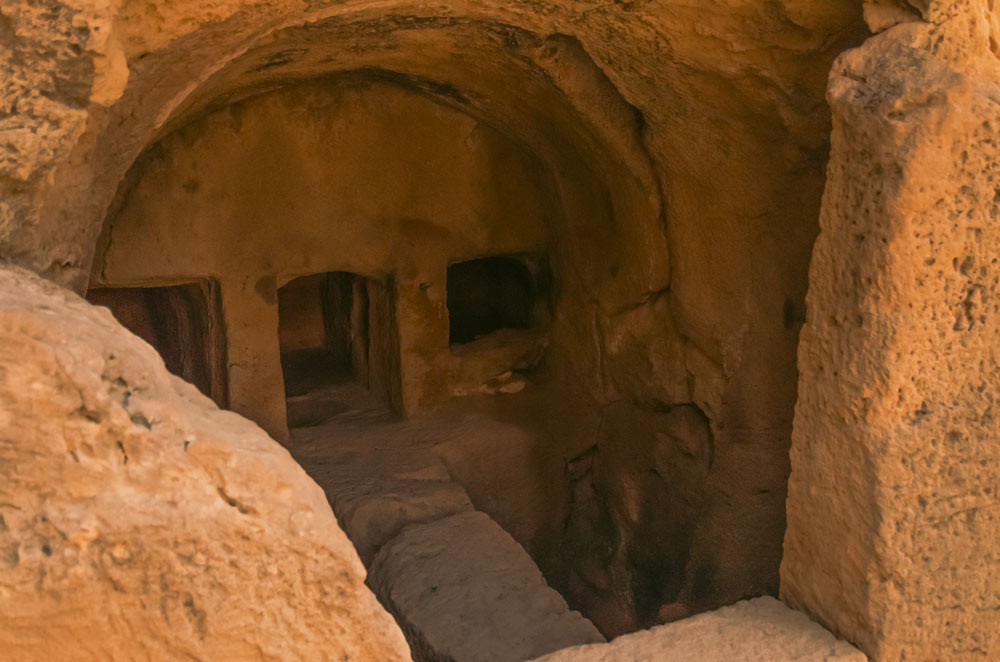
Tomb 5
One of the largest tombs accessible by dromos features a noticeable metal grid on the floor where ritual water is used to gather.
Tomb 6
Another tomb whose interior is accessible by dromos. Most of it is covered by a vault.
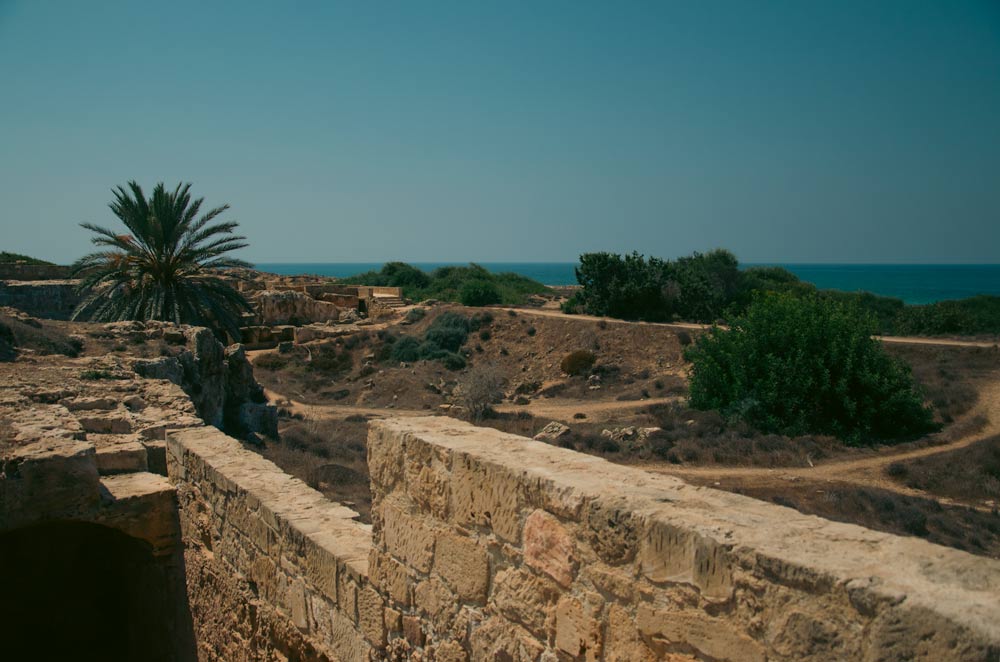
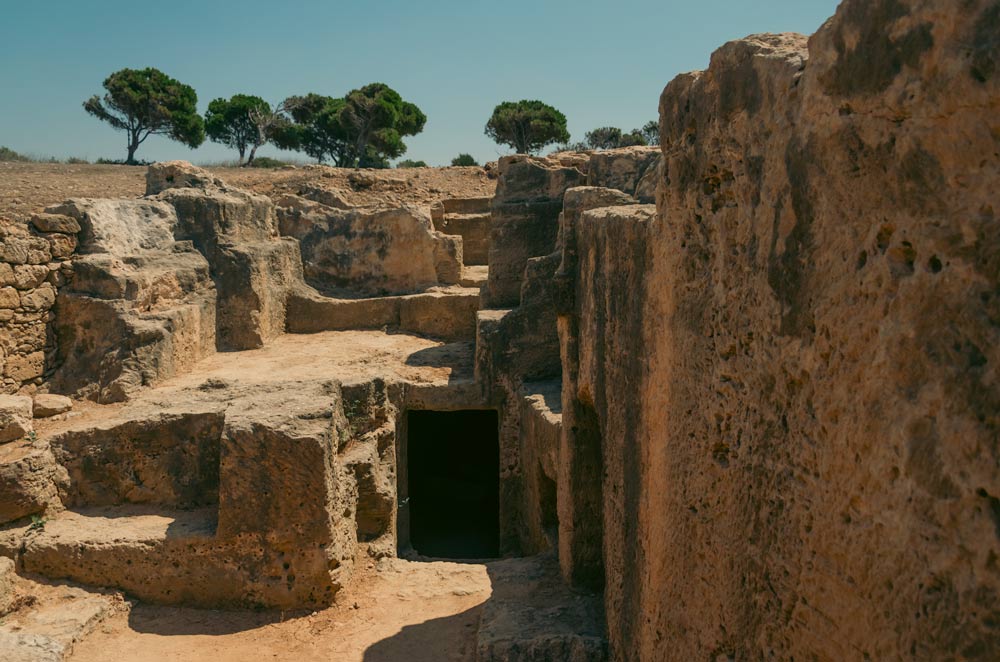
Tomb 7
The tomb is farthest from the entrance and accessible via the dromos. It offers an interesting view of the ocean behind it and the coastal area to the right, adorned with hotels. Inside, you’ll find two burial chambers with niches and a well. The tomb was my favorite and I think it gives some vaporwave vibes thanks the the serene surroundings.
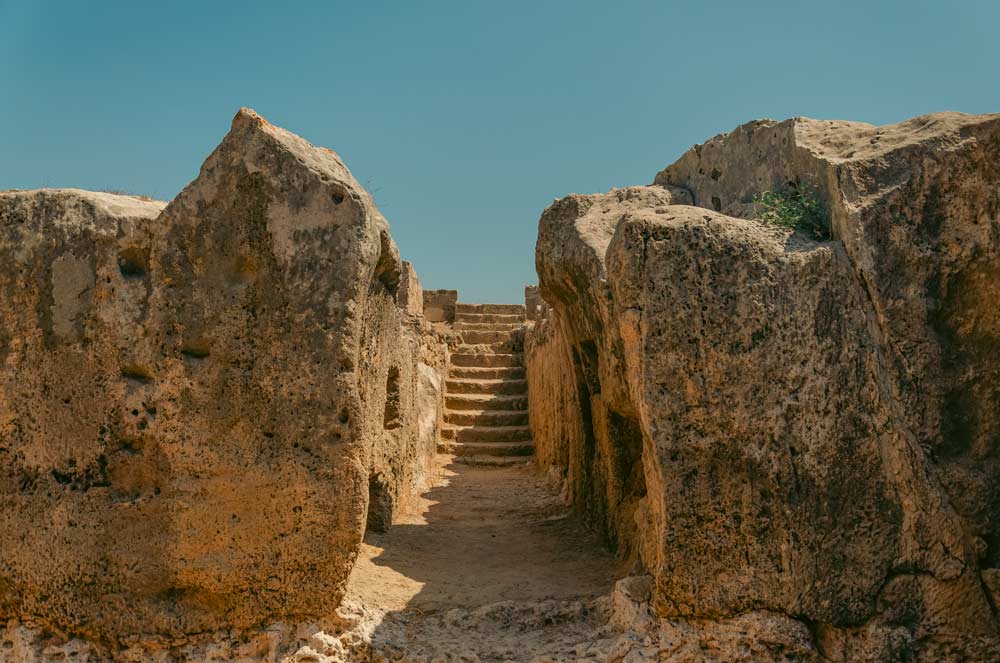
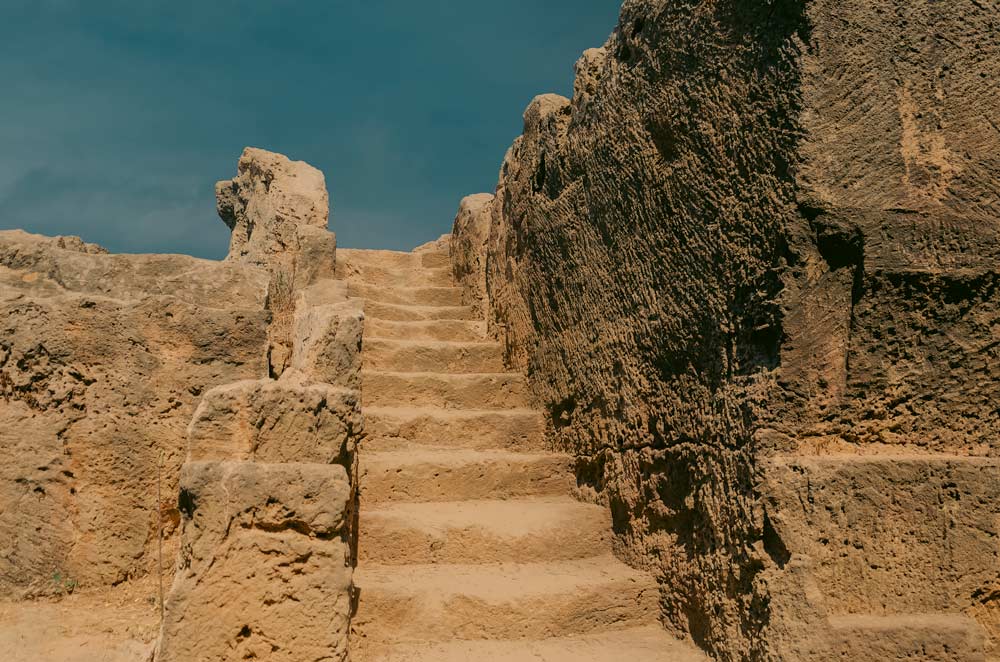
Tomb 8
This one resembles an ancient city. Unlike others, it comes with a rock in the middle, a corridor, and burial niches are placed around it.
Tomb 9
As you enter this spacious tomb, take note of its well-preserved facade, delicately carved into the rock. Inside, you’ll find the loculus (burial niche), neatly maintained within the chamber, adding to the site’s historical significance.
The historical site of the Tombs of the Kings in Paphos is characterized by a landscape reminiscent of desert-like conditions, contributing to its dominant presence. Intermittently, you’ll encounter green oasis corners, such as a cacti “wall” adorned with intricately carved “graffiti” leaves.
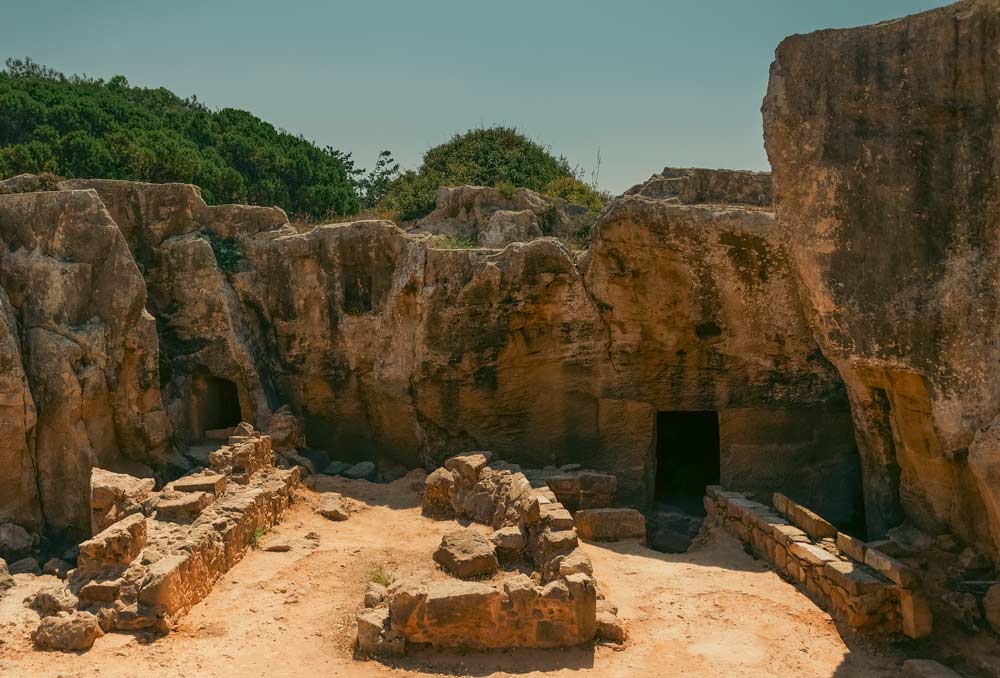
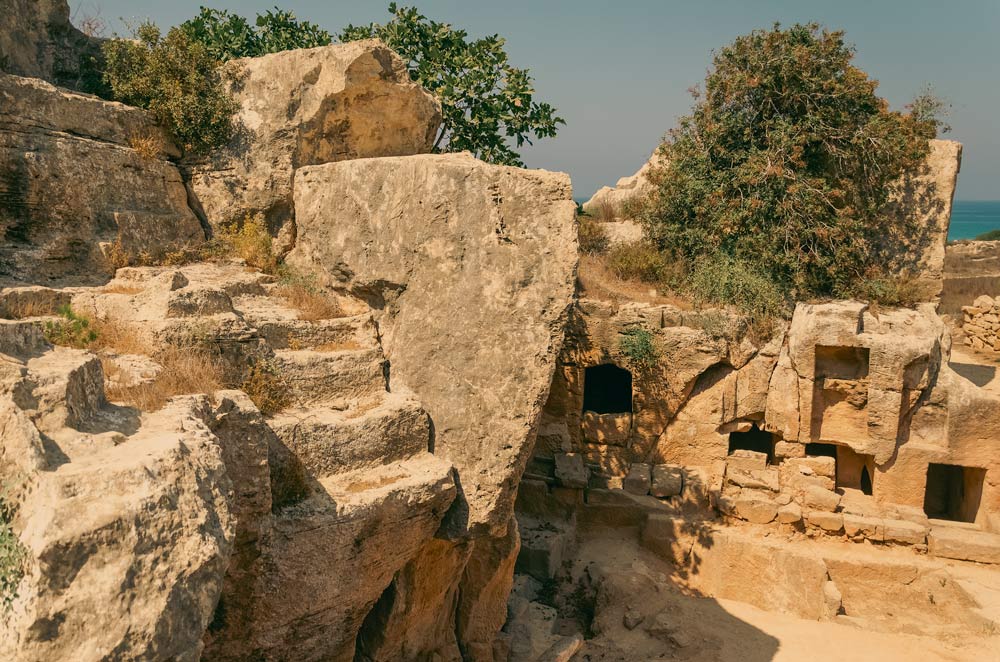
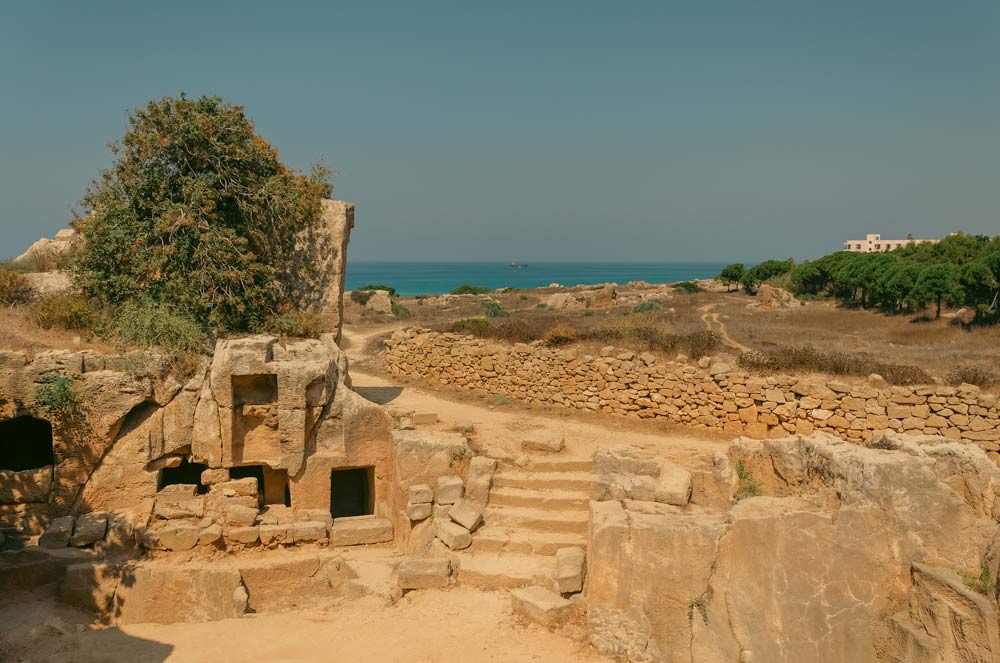
Some people online in their reviews expressed dissatisfaction with the limited information available about the tombs on the site. In case you want to read more you can try this site about Paphos (and just change the number of the tomb in url).
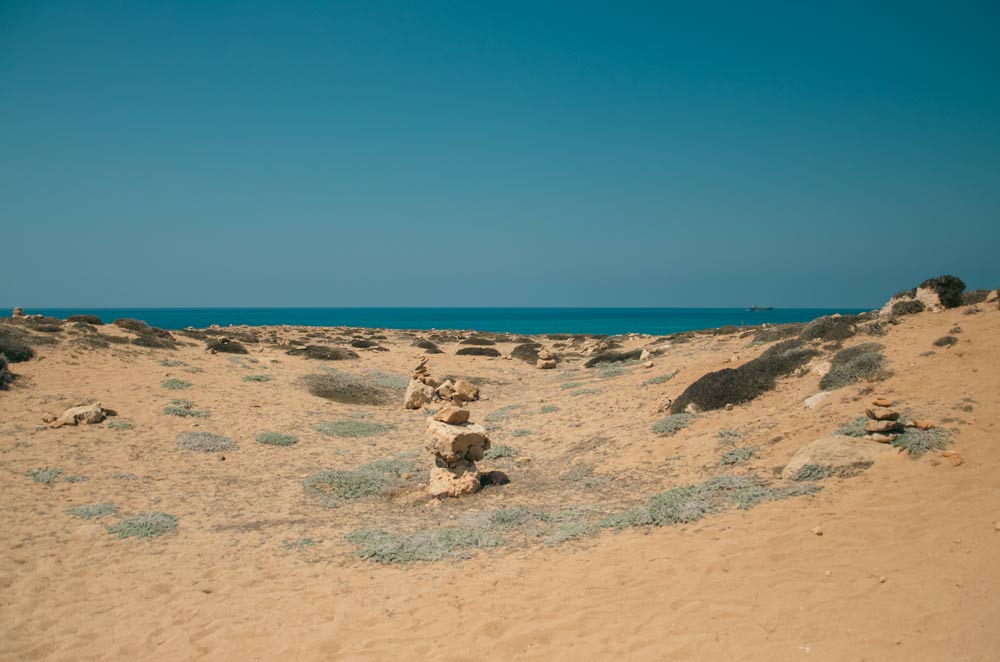
Sources:
pafosbuses.com
culture.gov.cy
Jesús D, Local Guide, google reviews
visitpafos.org.cy